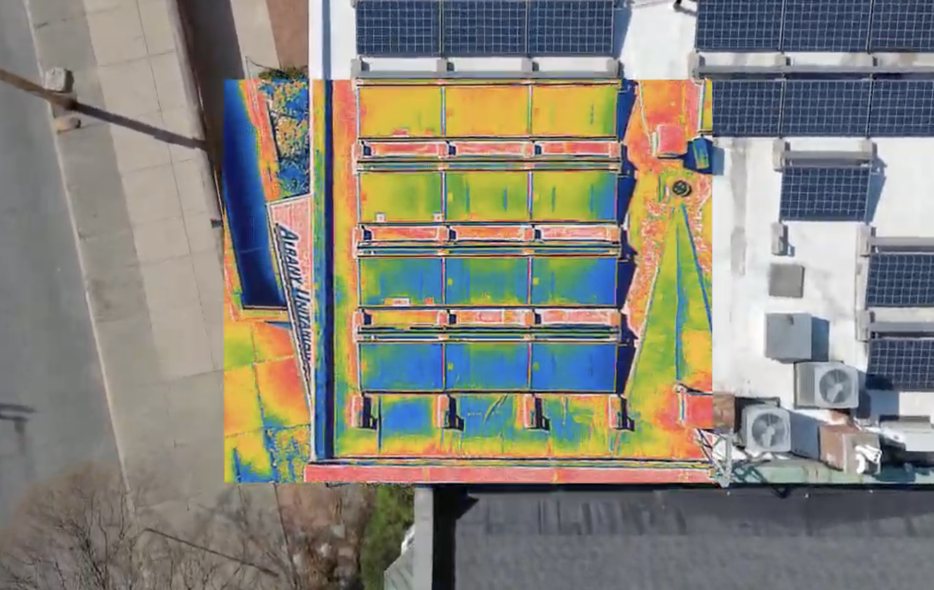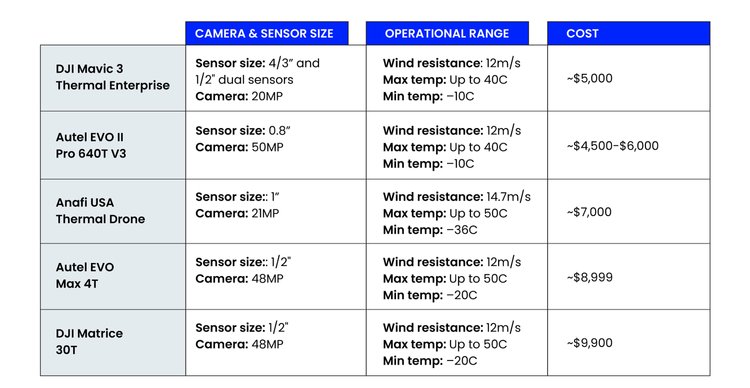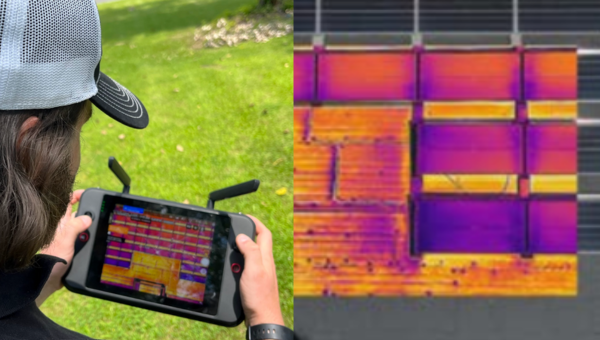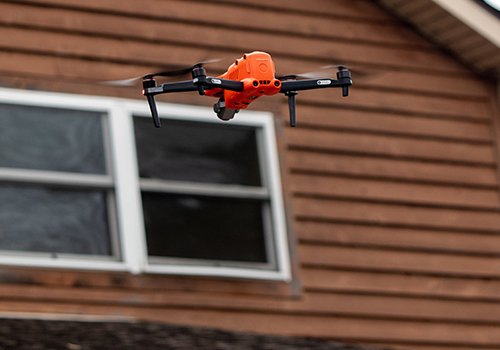Key takeaway: The optimal drone for residential and commercial solar O&M should have at least a 20MP camera, a half-inch thermal sensor, and the ability to fly in both heat and extreme cold, with Scanifly experts and Contractors most recommending DJI and Autel. Drones for O&M typically cost more than a typical RGB or toy drone, but budget options exist.
Conducting site inspections with drones yields the best combination of accurate measurements, time savings, and keeping Surveyors safe. A drone program can even pay for itself in insurance savings alone.
But a common question arises: what drone should I buy—and what features do I need?

Factors to consider
Drones themselves are not that expensive or complicated; you could theoretically build your own and the parts would cost a couple hundred dollars. Drone costs begin to increase due to extra components such as GPS, obstacle avoidance, HD cameras and gimbals, and more; that’s why a standard drone could easily cost from $1,000 to over $5,000.
However, solar O&M requires you to do more than take simple photos, such as spotting damaged hardware—you’ll need additional functionality to properly assess sites.
Matt Dodson, owner of Dodson Drone Solutions, a solar maintenance company in New England, shared that sensors and flight time are the most important elements when he’s drone shopping for an O&M use case.
“The sensor quality plays a huge role in drone selection for me; I will easily pay more for a higher quality sensor,” said Matt, who has worked in solar for over a decade. “Flight time is also an important factor, as well as set-up time, so I can get my work done efficiently and tackle long days with multiple projects.”
When it comes time to shop for a drone for O&M, here are some other key factors to consider:
-
Thermal and camera sensor: You want at least a 20-megapixel camera and a 1/2-inch thermal sensor size; these are the minimums that, based on our experience, will give you the data you need to spot array problems.
-
Ability to fly in inclement weather: Your drone needs to be able to handle wind and cold (especially if you’re optimizing your team utilization with a winter O&M program).
-
All in one: You want a drone with a built-in controller so you don’t have to spend additional money on extra devices (and additional time learning how to use them).
-
Surveyor work structure: If your Surveyors batch site visits, you’ll want a durable drone with long battery life (or buy multiple batteries with a portable charging pack).
This is all underpinned by budget: Are you willing to spend for the best? Or do you have a maximum amount you want to spend?
The best drones for residential and small commercial solar O&M
Here are a few drones that our team of experts have recommended in the past. These are not all of the drones on the market, just the handful that we—and the Contractors in our network—have recommended.

Choosing which drone to buy
DJI and Autel are among the top drone manufacturers in the world and are leaders among O&M drones. At first blush, the drones look almost identical, yet costs vary. A review from DroneBlog noted a few key differences that can inform a buying decision:
-
Photo and video quality: In tests, Autel tended to have a more crisp image than DJI.
-
Advanced flying features: DJI’s fly app has more templated features that can help pilots capture comprehensive imagery.
-
Battery: DroneBlog’s test found that DJI drones tended to last 32-34 minutes per charge while Autel lasted around 40 minutes.
-
Obstacle avoidance: Autel’s obstacle avoidance seems to be more effective in tests.
That said, all the aforementioned drones work for O&M use cases and different Contractors swear by one brand or another. The key is to buy what you need—it’s genuinely possible to spend upwards of $25,000 for a thermal drone, but that doesn’t mean it’s the best option for your business.
“The biggest thing that I’m looking at when purchasing equipment is how many different services I can offer with this product,” said Keith Perry, Owner and Lead Drone Operator of Hudson Valley Drones, a New York-based drone services organization. “Physical size is lower on the list, but I like to use the smallest aircraft for a given job—it reduces risk and makes it less likely that a passerby might give me a hard time.”
Setting up your O&M program for success
Building a revenue-driving O&M program is a new growth lever for Solar Contractors; with millions of systems already installed and thousands more added each year, the demand for O&M will grow as more arrays reach their mid-life.
A key part of making O&M successful, though, is your drone—the right drone will help you identify issues with the array that aren’t visible to the naked eye and might not show up on monitoring until it is too late. This not only helps you better serve customers, it can become a competitive differentiator. For example, thermal scanning can help people receive more in insurance claims after a storm because you discovered damage that the adjuster missed.

Choosing the right drone is a function of many things. You can get a high-quality machine in a range of budgets. The key is to pick the one that can handle your work style and capacity; saving money on a cheaper drone only to need to replace it won’t help anyone. Buy what you need so you can focus on work rather than upgrades, repairs, or maintenance.






